Table of Contents
An influencer marketplace has become an essential tool for brands looking to connect with influencers and UGC creators. When integrated into social media efforts, influencer marketing can drive brand awareness, generate leads, and boost sales, especially for targeted audiences and niche markets.
By collaborating with influencers, your brand gains access to the creativity, authenticity, and trust they’ve built with their followers through user-generated content. Influencers excel at producing content that resonates with their audience, thus helping your brand stand out and gain traction on platforms where you want to consolidate your presence.
As influencer marketing continues to grow, tools like influencer marketplaces can help you find the right influencer and maximise the collaboration. A thoughtful strategy from the outset and a willingness to learn from the partnership are key to creating impactful campaigns that truly resonate.
Let’s explore what an influencer marketplace is, the benefits of using one, and the best influencer marketplaces for brands to discover and collaborate with creators.
An influencer marketplace is a platform that connects brands with influencers and content creators, offering a centralised space to discover, engage, and collaborate with relevant creators across social media. Brands use influencer marketplaces to scale their user-generated content campaigns.
These marketplaces often provide features like:
By bringing a diverse range of influencers together in one platform, influencer marketplaces streamline the process for brands, making it easier to boost online presence, run effective campaigns, and achieve measurable ROI.
All the influencers are UGC creators, but not all the UGC creators are influencers. They both produce high-quality and engaging content, but the key difference lies in their respective communities. Influencers focus on cultivating the right audience, building a loyal community around their area of expertise, and leveraging that community to engage and amplify content.
UGC creators, on the other hand, often act like freelancers, creating polished content and sending it directly to brands for distribution.
This means that brands hiring UGC creators would obtain the content and rights, while those hiring influencers would get the content, a licence to use it, plus distribution through the influencer’s social profiles.
Influencer marketplaces work by connecting brands and influencers through a platform that streamlines the collaboration process.
Brands use the marketplace to search for influencers based on criteria like niche, audience demographics, and engagement rates, and solicit influencers to collaborate on their campaigns. The marketplace provides tools for managing communication, reviewing content, making payments, and tracking performance.
Let’s explore the usual tools and value of influencer marketplaces for brands and influencers.
Here are some of the best influencer marketplaces for brands and influencers. They differentiate themselves in their influencer network demographics, payment and reward systems, and platform fees. Let’s take a look at some of the top influencer marketplaces:
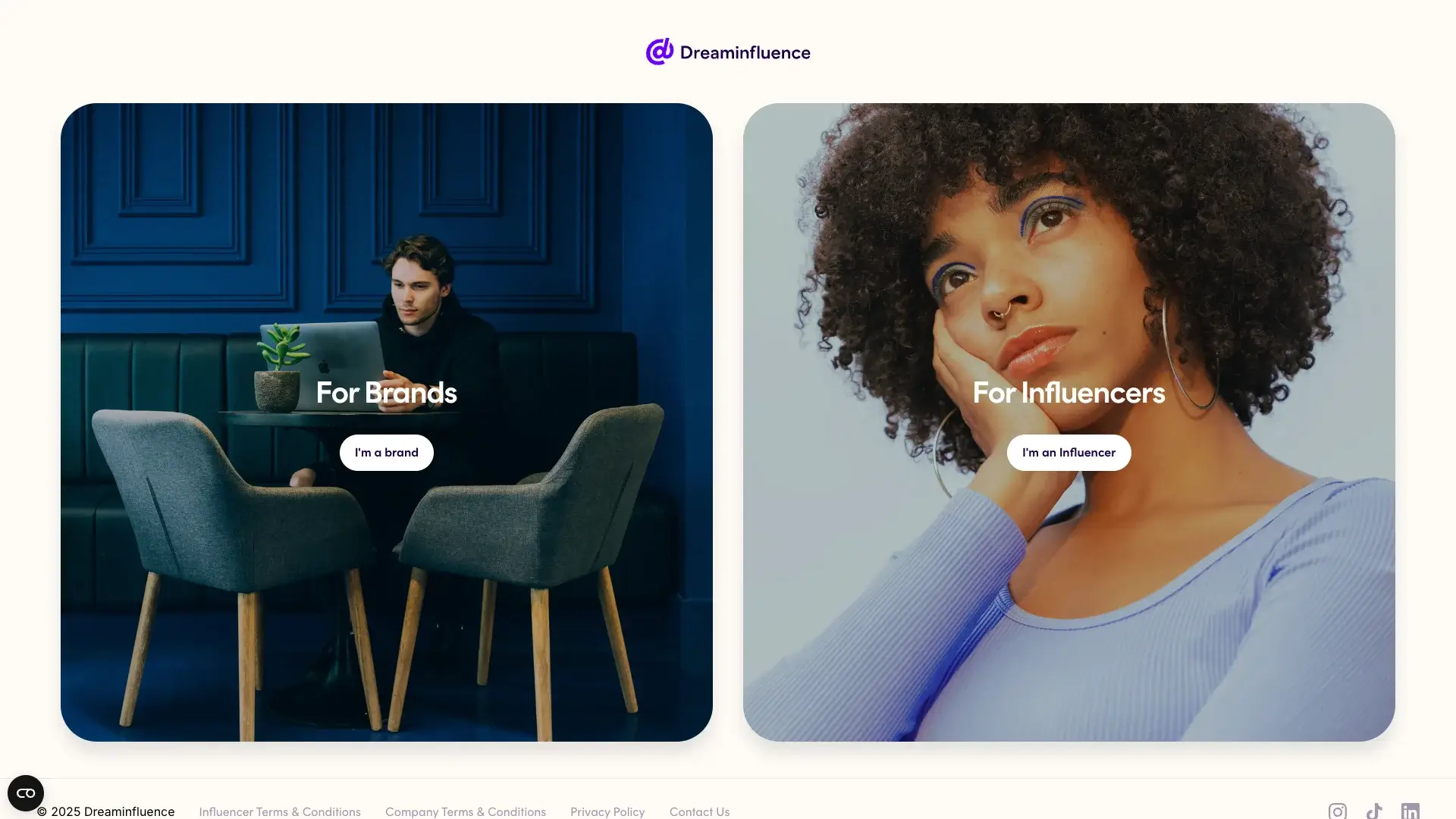
Dreaminfluence is an influencer marketplace that connects brands with vetted influencers, enabling genuine storytelling to drive measurable business results. Recently acquired by Flowbox, it combines expertise from two major European UGC platforms.
The platform focuses on quality and authenticity, helping brands manage every stage of their influencer collaborations, from discovery and briefing to reporting and payments. Dreaminfluence’s curated influencer network focuses on verified creators and reliable audience data, helping brands choose partnerships that actually convert.
Key features for brands:
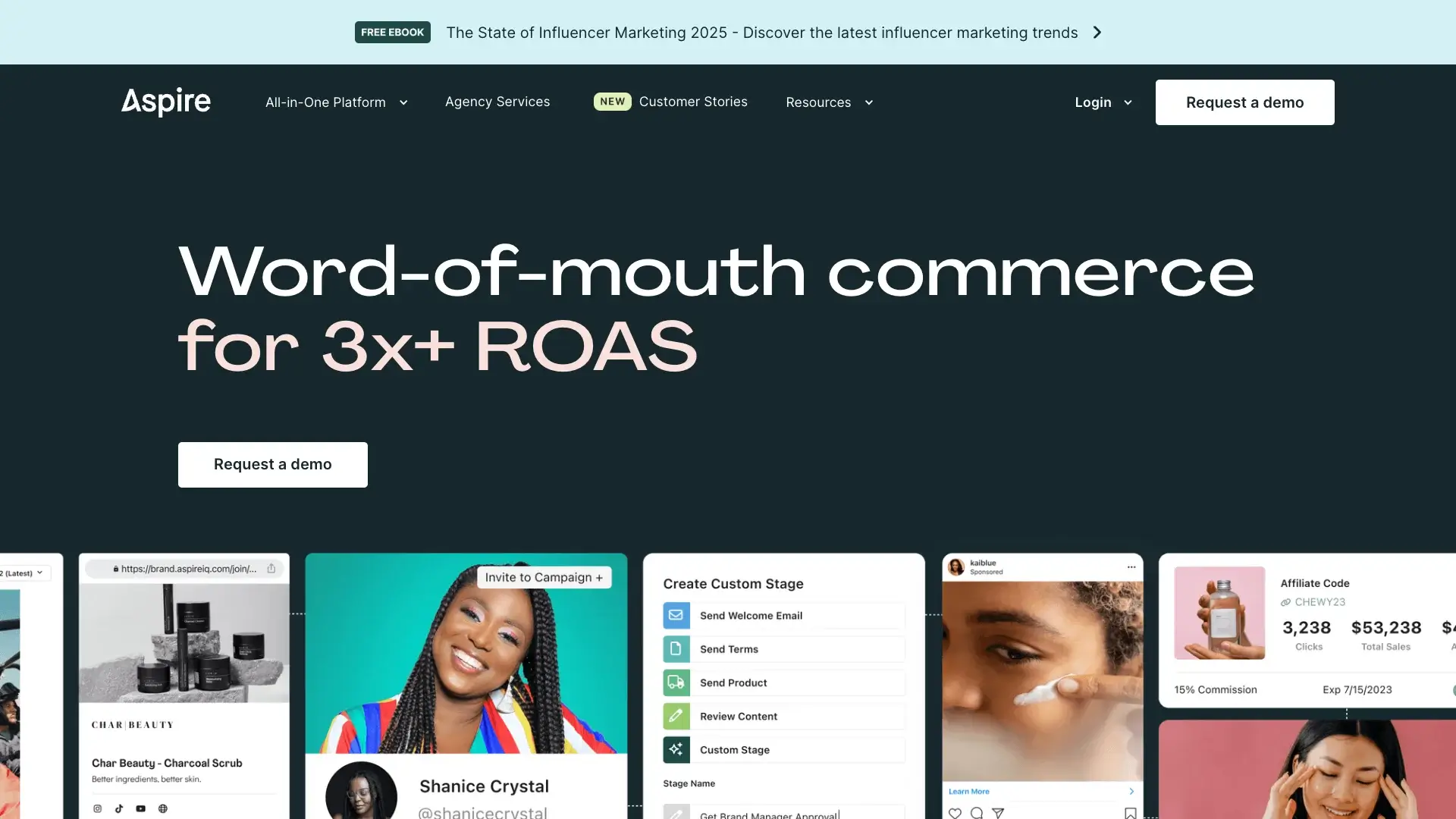
Aspire.io is an influencer marketplace tailored for eCommerce brands, offering tools for influencer discovery, creator marketplace access, campaign and content management, affiliate tracking, and performance analytics.
For larger enterprises, Aspire.io also provides an in-house team of experts to manage influencer marketing strategies and campaigns end-to-end, supporting brands that prefer a fully managed service.
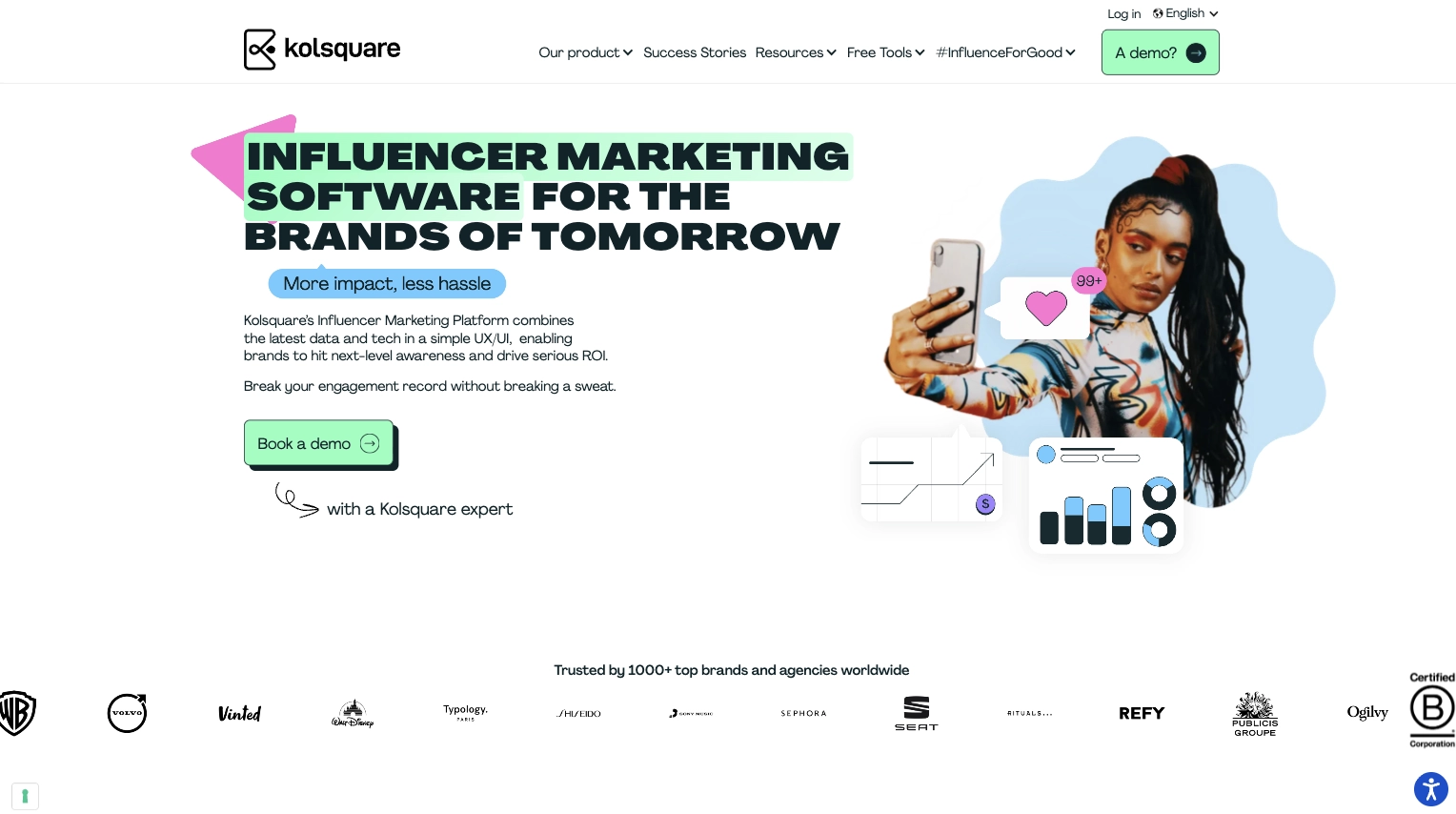
Kolsquare is a European influencer marketplace that allows brands to find influencers and manage influencer marketing campaigns. Their platform offers additional tools to generate reports around the campaigns and content collection, analyse the competition, and manage the relationship with influencers.
Kolsquare leans into trustworthy data and compliance. You get large-scale creator search, audience insights, campaign tracking, and features like Compliance Score and Credibility Score to check ad-disclosure and authenticity.
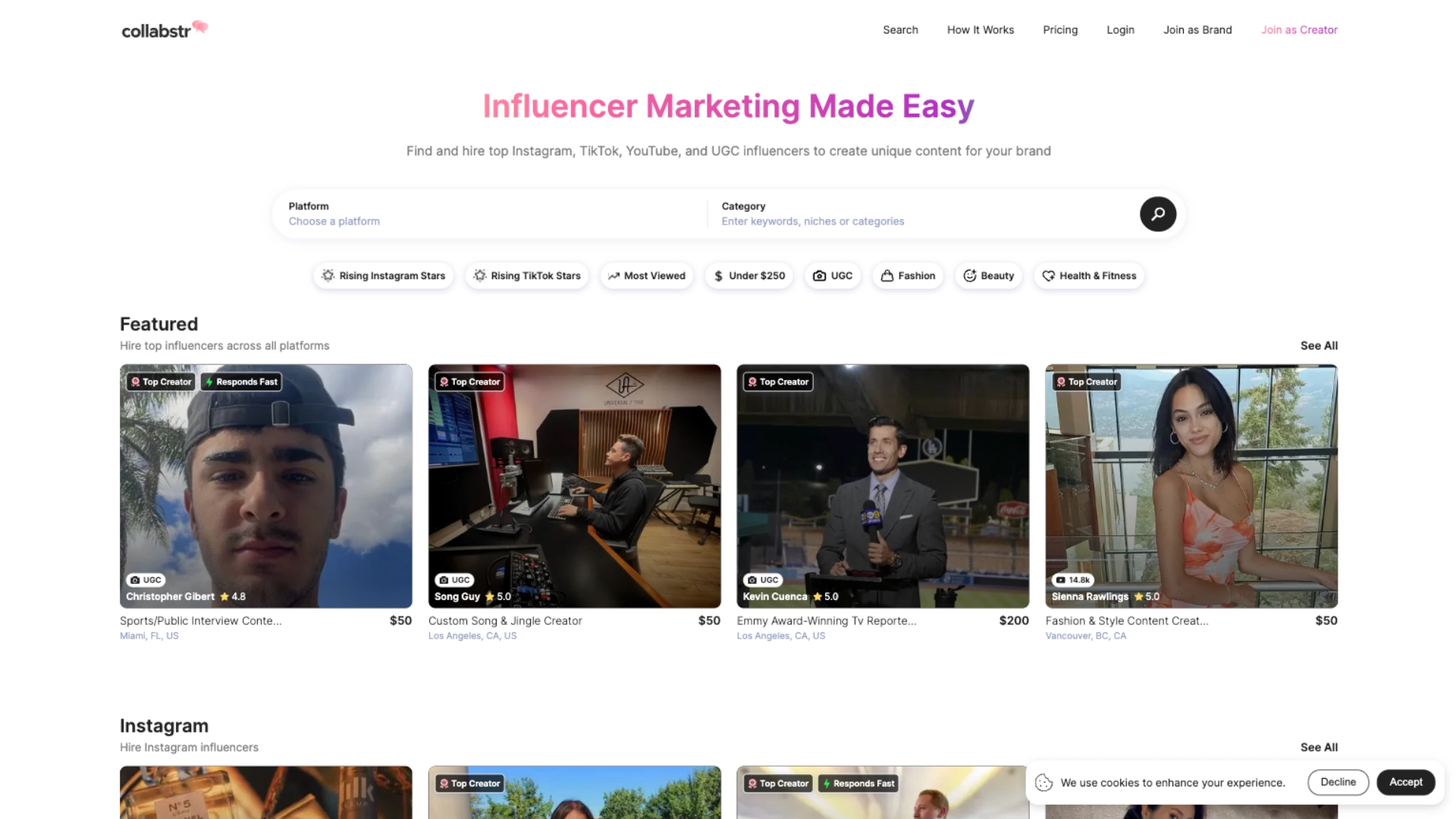
Collabstr is a self-serve influencer marketplace where brands can hire creators on TikTok, Instagram, YouTube, and other platforms to produce sponsored posts or UGC. It’s designed for simplicity, offering transparent pricing, secure payments, and fast turnaround times.
The platform makes it easy to browse thousands of influencers, compare pricing packages, and manage communication and delivery in one dashboard. Collabstr’s built-in escrow system ensures that payments are only released once work is completed, which makes it popular with small and mid-sized teams testing influencer collaborations.
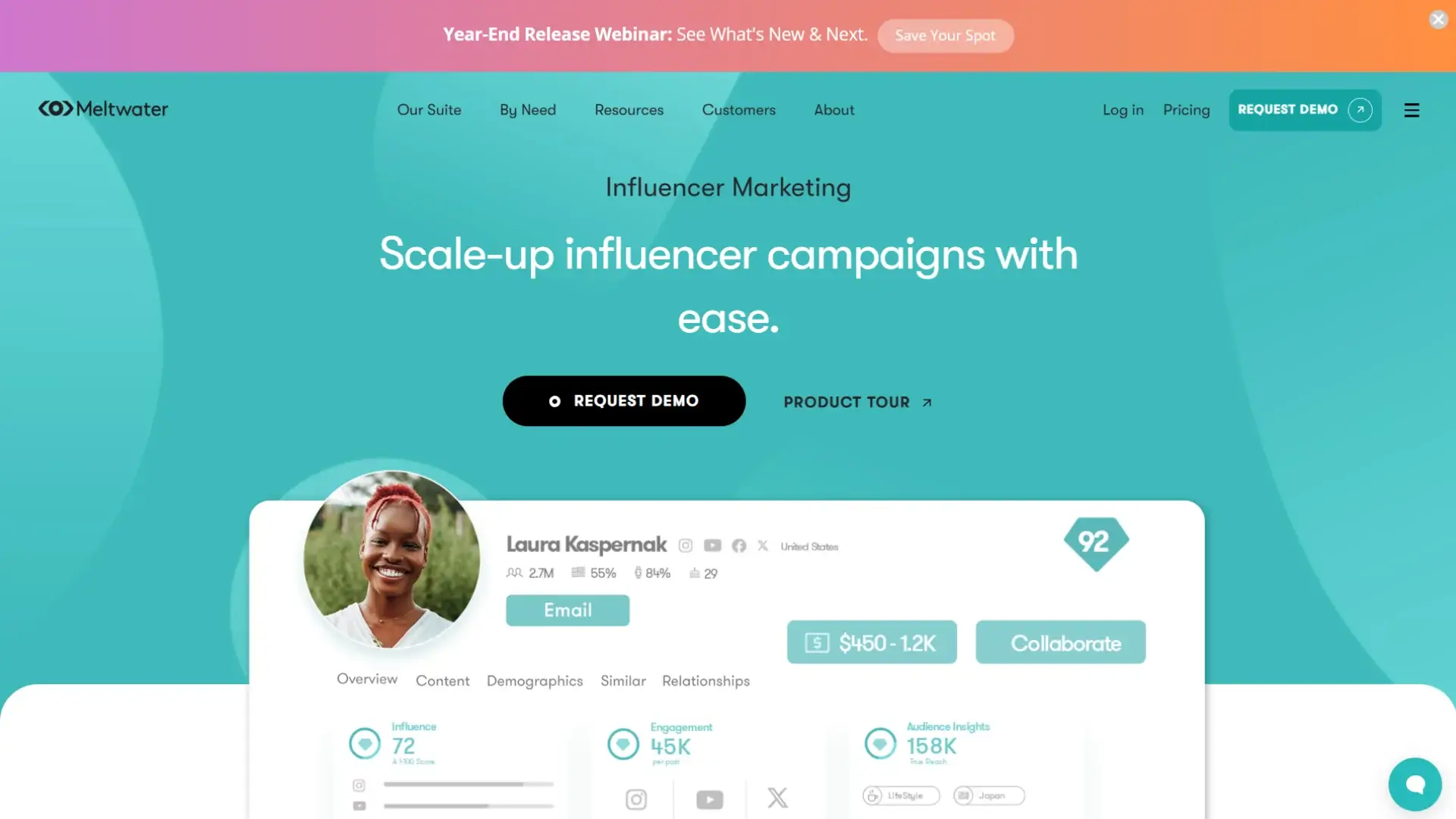
Meltwater’s influencer marketplace is used by brands and agencies to build, scale, and measure influencer programs across Instagram, TikTok, YouTube, and more. Meltwater acquired Klear in 2021 and now offers it as part of its broader social and consumer intelligence suite.
Meltwater is built for teams that want reliable discovery, solid vetting, and clean reporting without a steep learning curve. You get search with advanced filters, audience and fraud checks, campaign workflows, and eCommerce tie-ins like codes, links, and sales tracking.
Influencer marketplaces are transforming the way brands and creators connect. By bringing both parties together on a single platform, they eliminate much of the time, guesswork, and uncertainty traditionally involved in influencer marketing.
Beyond discovery, influencer marketplaces make collaboration smoother and faster, giving brands access to eager, authentic, and often more affordable talent. Altogether, they provide a smarter, more streamlined approach to influencer marketing that saves time, reduces risk, and maximises campaign results.
Let’s explore some of the benefits of using an influencer marketplace to scale your user-generated content strategy.
To join an influencer marketplace, creators undergo a vetting process to make sure they have strong engagement metrics and authentic practices. Eligibility requirements, such as verifying their identity and follower count, guarantee that brands can build high-quality influencer relationships.
Additionally, influencers who enter into the marketplace agree to share real-time data with brands. This allows the platform to offer more detailed insights than non-opt-in networks, helping brands make fully informed partnership decisions.
Some marketplace platforms provide advanced features that help brands filter influencers and creators according to their campaign needs. Thanks to advanced search capabilities, like discovery and matching tools, you can refine your search by demographics, audience, interests, keywords and more, ensuring you easily find what you need.
Marketplaces centralise communication, contracts, and payment processes, reducing administrative work. Both brands and influencers can manage collaborations efficiently from one platform. This removes the need for endless spreadsheets, DMs, and invoices for each campaign and influencer.
Using an influencer marketplace offers brands a fast, efficient way to connect with influencers who are eager and experienced in brand partnerships. Because these influencers have opted into the platform, they’re already familiar with the collaboration process, making communication and campaign management smoother and more reliable.
Additionally, marketplaces provide access to a wide range of up-and-coming influencers, from nano-influencers to mid-tier, who are often more affordable and deliver highly engaged audiences. This makes them ideal partners for brands seeking to maximise impact, especially those with limited budgets who are looking for authentic, high-performing collaborations.
Many influencer marketplaces offer content tracking systems that facilitate brands to confirm when the influencer has delivered the content piece, as well as analytics dashboards showing performance metrics, engagement rates, and ROI, helping brands make data-driven decisions.
The selection process for an influencer marketplace isn’t one-size-fits-all. To find the right fit, consider these steps:
Choosing the right influencer marketplace requires a clear understanding of your goals, resources, and integration needs. Evaluating influencers and creators, budget, and pricing models ensures alignment with your marketing strategy. Testing platforms through demos or trials helps you make informed decisions before committing.
By considering transparency, discovery tools, and support, you can maximise campaign effectiveness. Ultimately, a thoughtful selection process sets the foundation for successful, impactful influencer marketing.
Request a demo with Flowbox to build and scale your UGC and influencer marketing strategy cost-effectively.
Here is a summary of the previously discussed topics, along with answers to some of the most frequently asked questions about influencer marketplaces.
An influencer marketplace is a platform that connects brands with influencers and content creators, offering a centralised space to discover, engage, and collaborate with relevant creators across social media. It’s a time-saving tool to build influencer teams and manage authentic campaigns.
The best influencer marketplace for brands depends on many aspects, including the brand’s needs, localisation, and budget. The best influencer marketplaces in 2025 are Dreaminfluence (Flowbox), Aspire.io, Kolsquare, Collabstr, and Meltwater.
Absolutely. Marketplaces vet creators for authenticity and engagement, handle contracts and payments, and provide clear terms for both brands and creators, ensuring safe, transparent, and professional collaborations.
Influencers and creators joining a marketplace are vetted for authenticity and engagement, meet eligibility requirements, and share real-time data to give brands detailed insights for informed partnerships.
Influencer marketplaces provide advanced search filters and discovery tools, allowing brands to find creators by niche, audience demographics, engagement rates, platform (like TikTok or Instagram), and other criteria. This ensures campaigns are matched with influencers who resonate with the target audience.
Creators gain access to brands, streamlined campaign management, secure payments, and a platform to showcase their audience insights. They also benefit from creative freedom, transparent terms, and opportunities to collaborate on multiple campaigns efficiently.